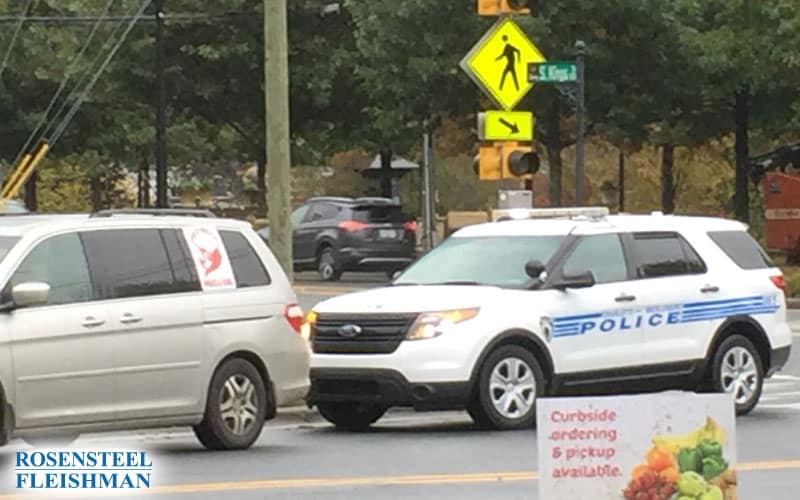While drunk driving accidents have been on the decline in the past few years, drunk driving is still a major problem in the United States and a leading cause of car accidents. The most recent statistics released by the National Highway Traffic Safety Administration show that approximately 28 people die in car accidents every day […]

DWI Field Tests
The National Highway Traffic Safety Administration (NHTSA), a division of the The United States Department of Transportation, establishes the standards for the field sobriety tests that frequently administered in DWI and DUI cases across the United States. These tests are in use across Mecklenburg County and North Carolina in DWI cases and one or more of these “Standardized Field Sobriety Tests” is utilized in almost every DWI case in North Carolina.
While the validity of these tests can certainly be disputed, the fact is that in almost any Charlotte dwi case you are going to need an attorney who is experienced in cross-examining officers in the proper administration and interpretation of these tests.
The four tests that The National Highway Traffic Safety Administration endorse are the Horizontal Gaze Nystagmus, the One Leg Stand, the Walk and Turn, and a Portable Breath Test.
The Horizontal Gaze Nystagmus Test (HGN), is a test intended to detect impairment by observing a suspected impaired driver’s eyes as they follow a stimulus, usually a pen or a finger. The NHTSA defines Nystagmus as: “an involuntary jerking of the eyes”. An officer will typically ask a person to stand in front of him while he moves the stimulus back and forth across the person’s field of vision. He instructs the person to watch the stimulus by moving her eyes not her head.
While the suspect moves her eyes the officers determines whether he can detect the “involuntary jerking”. If he can detect it he lists that as one indicator of impairment. There are three different clues of nystagmus that the officer looks for in each eye. This gives a total of six possible clues. It is important to note that this is a complex test and it is easy for an officer to misjudge an aspect of it or miss one of the steps in the process. An experienced DWI attorney looks for these mistakes in successfully defending an impaired driving case.
The One Leg Stand test is intended to detect impairment by placing a suspect in a position where she has to not only follow instructions, but also balance and count out-loud. An officer will instruct a suspect to stand with her feet together and her arms down at her sides. The officer will then tell the suspect to raise her foot six inches off of the ground while keeping both legs straight and arms at her sides. The officer will then instruct the person to count out loud while looking at her foot. At that point the person will start the test and continue to count for thirty seconds.
There are only four specific clues that the officer is trained to detect on the One Leg Stand test. The officer must note whether the individual sways while trying to balance, whether she uses her arms to balance, whether she hops, and whether she puts her foot down during the test. Frequently in court an officer will list other factors he believes the suspect showed that demonstrated her impairment, without an experienced attorney making objections and cross-examining an officer those factors may become a part of the record.
The Walk and Turn test is a deceptively simple test. A suspected impaired driver is asked to walk a straight line for nine steps, turn around and walk back for nine steps. What the suspect does not realize is that the officer is taking mental note of clues indicating impairment throughout the test. If the test is administered properly and with the proper instructions the officer can pick up clues in how the suspect stands during the instruction phase, when the suspect starts the test and how the suspect performs the test. Many of these clues the suspect does not even realize are a part of the test.
In many cases the suspect who is asked to perform the test is so impaired that he is obviously unable to perform the test in a normal way. He may be unable to walk with his heel to his toe, or he may be unable to count nine tests. Usually, however, the clues are much more subtle and depend on the test being administered properly. It is very important to have a lawyer well-versed in the field sobriety tests who can identify the issues. They may make mistakes in administering the test or in interpreting the results. For instance officers sometimes give the instructions incorrectly or count the clues incorrectly. In order to receive a fair trial the accused needs a lawyer who can recognize these issues and use them properly in court.
While there are multiple choices when you have been charged with a DWI in Charlotte north carolina it is important that you contact an experienced DWI attorney at Rosensteel Fleishman to discuss your case.
Additional DWI Articles
I. You Will Need a Lawyer Just because someone has had drinks, does notautomatically mean that the law should rest on their shoulders and result in an automatic conviction. That is partly why, under North Carolina law, a series of safeguards have been adopted. These safeguards often rely on, and are helpfully followed, by experienced […]
I. Working While Impaired It is a sobering crisis. We cannot say for sure just exactly how many people drink during work hours, and then drive a vehicle within a short period of time after leaving the restaurant or bar. Often, it requires help from a car accident attorney to see if this drinking is […]
I. PC for DWI An experienced Charlotte criminal trial attorney is aware of the unique place that DWI charges can play in North Carolina courts. There’s no doubt that the public generally supports crackdowns on DWI offenses in North Carolina. But here’s the news flash: as important as DWI is, to maintaining public safety, it’s […]

